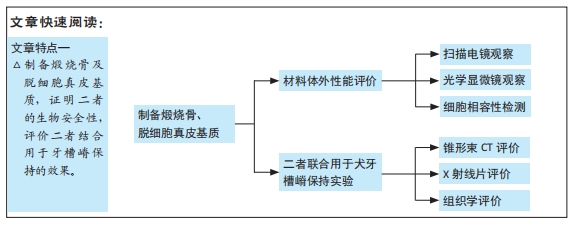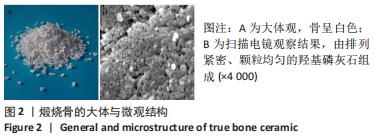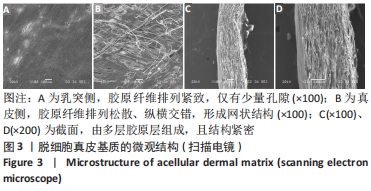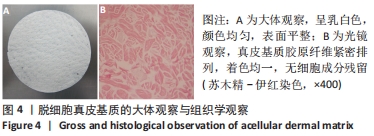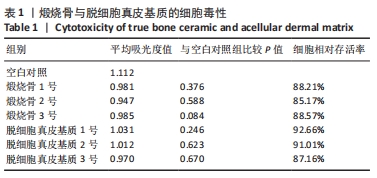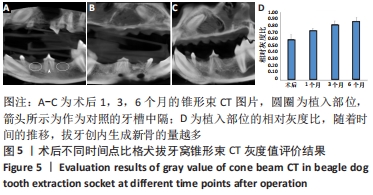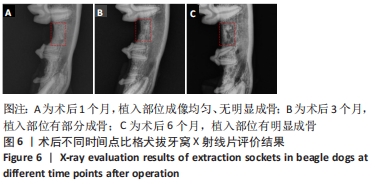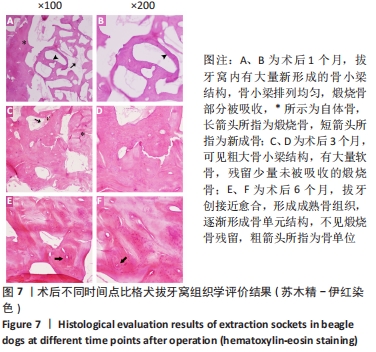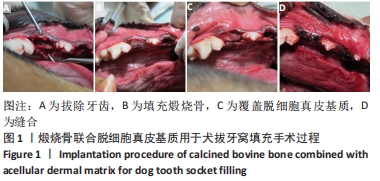[1] LEKOVIC V, KENNEY EB, WEINLAENDER M, et al. A bone regenerative approach to alveolar ridge maintenance following tooth extraction. Report of 10 cases. J Periodontol. 1997;68(6):563-570.
[2] LEKOVIC V, CAMARGO PM, KLOKKEVOLD PR, et al. Preservation of alveolar bone in extraction sockets using bioabsorbable membranes. J Periodontol. 1998;69(9):1044-1049.
[3] DE SANTIS D, SINIGAGLIA S, PANCERA P, et al. An overview of guided bone regeneration. J Biol Regul Homeost Agents. 2019;33(Suppl1):49-53.
[4] RENZO G, DI NARDO D, GIANFRANCO G, et al. One-stage laser-microtextured implants immediately placed in the inter-radicular septum of molar fresh extraction sockets associated with GBR technique. A case series study. J Clin Exp Dent. 2018;10(10):e996-e100.
[5] 龚祥国,赵清桐,沈浩.膜引导骨再生技术应用于即刻种植牙中的临床疗效及对骨修复的影响研究[J].吉林医学,2019,40(7):1537-1538.
[6] 马贵骧,韩巽,王艺明,等.天然型无机骨的制备及其成骨效应的实验研究[J].中国修复重建外科杂志,1996,10(1):35-38.
[7] 刘斌钰,马晓红,李宁毅,等.煅烧骨的生物相容性及细胞相容性评价[J].中国组织工程研究与临床康复,2008,12(41):8055-8058.
[8] 梁佳越,王文雪,金杭颖,等.国产牛煅烧骨填充材料用于拔牙窝位点保存及种植骨增量的临床效果评价[J].中国医疗设备,2019,34(7):56-60.
[9] 崔妮,秦瑞峰,侯锐,等.天然煅烧骨修复材料用于拔牙后颌骨缺损修复的多中心临床研究[J].实用口腔医学杂志,2015,31(1):81-84.
[10] 綦惠,杰永生,陈磊,等.脱细胞真皮基质制备及其生物相容性研究[J].中国修复重建外科杂志,2014,28(6):768-772.
[11] 潘南芳,卓金,王欣.异种脱细胞真皮基质移植修复深度烧伤创面[J].中国组织工程研究,2016,20(3):408-412.
[12] 王佳敏,陈菊香,谷印堂,等.异种脱细胞真皮基质在临床上的应用和开发[J].中华损伤与修复杂志,2019,14(1):71-74.
[13] 李晓宇,伍靖,曹君,等.脱细胞真皮基质复合小牛脱细胞骨修复口腔上颌窦瘘[J].华西口腔医学杂志,2018,36(6):633-637.
[14] CHANDARANA MN, JAFFERBHOY S, SEKHAR M, et al. Acellular dermal matrix in implant-based immediate breast reconstructions: a comparison of prepectoral and subpectoral approach. Gland Surg. 2018;7(Suppl1):S64-S69.
[15] 杨荣强,崔正军.异种脱细胞真皮基质临床应用研究与进展[J].中国美容医学,2017,26(9):132-135.
[16] 国家食品药品监督管理局济南医疗器械质量监督检验中心.医疗器械生物学评价 第12部分:样品制备与参照材料:GBT 16886.12[S], 2017.
[17] 国家食品药品监督管理局济南医疗器械质量监督检验中心.医疗器械生物学评价 第5部分:体外细胞毒性试验:GB/T 16886.5[S], 2017.
[18] LIU BINYU,GUO MINFANG,XING YANXIA, et al. Safety of true bone ceramics. Chine J Tissue Eng Res. 2013;17(16):2874-2882.
[19] 乔玮,任晓琦,石浩,等.煅烧异种骨的生物相容性研究[J].中国修复重建外科杂志,2017,31(10):1250-1255.
[20] 陈一宁,但卫华,但年华.脱细胞真皮基质的改性及应用概述[J].材料导报,2018,32(7):2311-2319.
[21] WRIGHT DW, MADDEN M, LUTERMAN A, et al. Clinical evaluation of an acellular allograft dermal matrix in full thickness burns. J Burn Care Rehabi. 1996;17(2):124-136.
[22] SRIVASTAVA A, EVANGELINE ZD, LAWRENCE JJ, et al. Use of porcine acellular dermal matrix as a dermal substitute in RATS. Ann Surg. 2001;233(3):400-408.
[23] 姜笃银,陈璧,贾赤宇,等.异种脱细胞真皮基质抗原性的实验研究[J].中华烧伤杂志,2003,19(3):155-158.
[24] DESSGUN EZ, BOTTS JL, SRIVASTAVA A, et al. Long-term outcome of xenogenic dermal matrix implantation in immunocompetent rats. J Surg Res. 2001;96(1):96-106.
[25] ALLMAN AJ, MCPHERSON TB,STEPHEN FB, et al. Xenogeneic extracellular matrix grafts elicit a TH2-Restricted immune response. Transplantation. 2001;71(11):1631-1640.
[26] RIPAMONTI U. Osteoinduction in porous hydroxyapatite implanted in heterotopic sites of different animal models. Biomaterials. 1996;17(1):31-35.
[27] LAURENT G, SANDRINE H, DELPHINE C, et al. Bovine chondrocyte behaviour in three-dimensional type I collagen gel in terms of gel contraction, proliferation and gene expression. Biomaterials. 2006;27(1):79-90.
[28] GHOSH MM, BOYCE S, LAYTON C, et al. A comparison of methodologies for the preparation of human Epidermal-Dermal composites. Ann Plast Surg. 1997;39(4):390-404.
[29] EDWARD BF, LAWRENCE GB. Ridge augmentation with a folded acellular dermal matrix allograft: a case report. J Contemp Dent Pract. 2001;2(3):1-9.
[30] 杨建,胡开进,彭莲,等.拔牙创口腔组织补片植入对患者 拔牙术后生活质量影响评价[J].牙体牙髓牙周病学杂志,2005,15(9):504-506.
|
